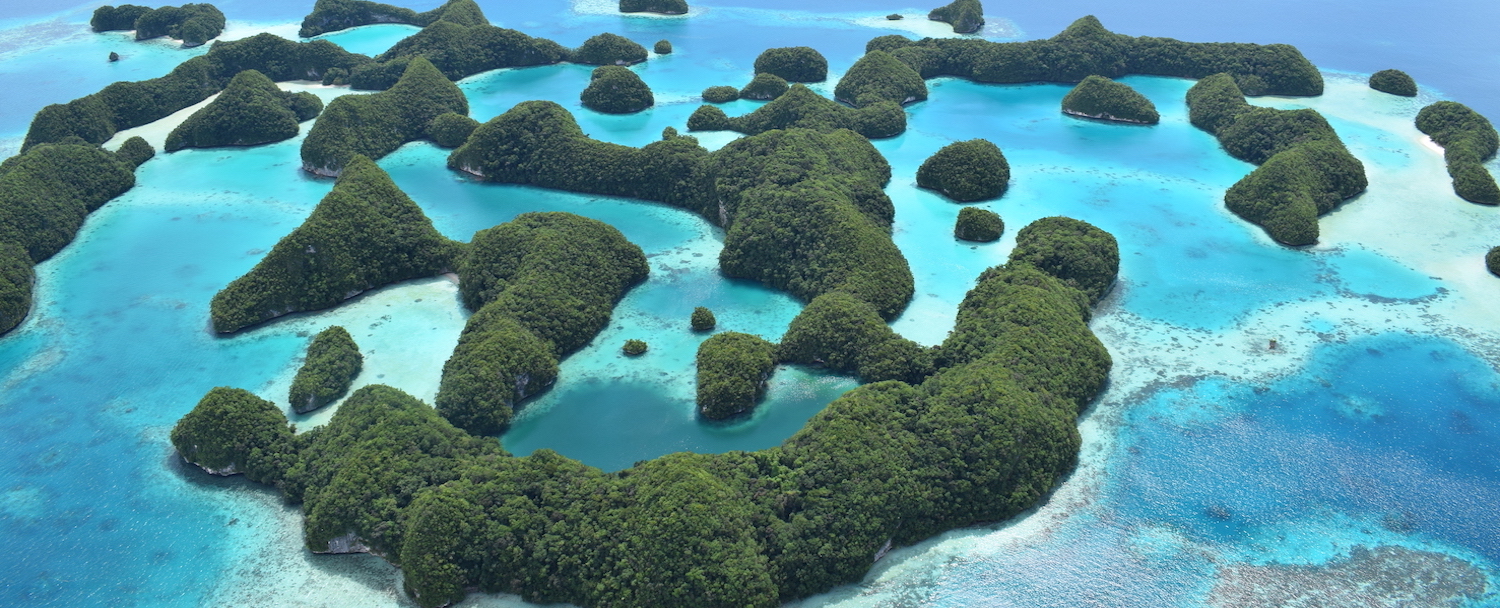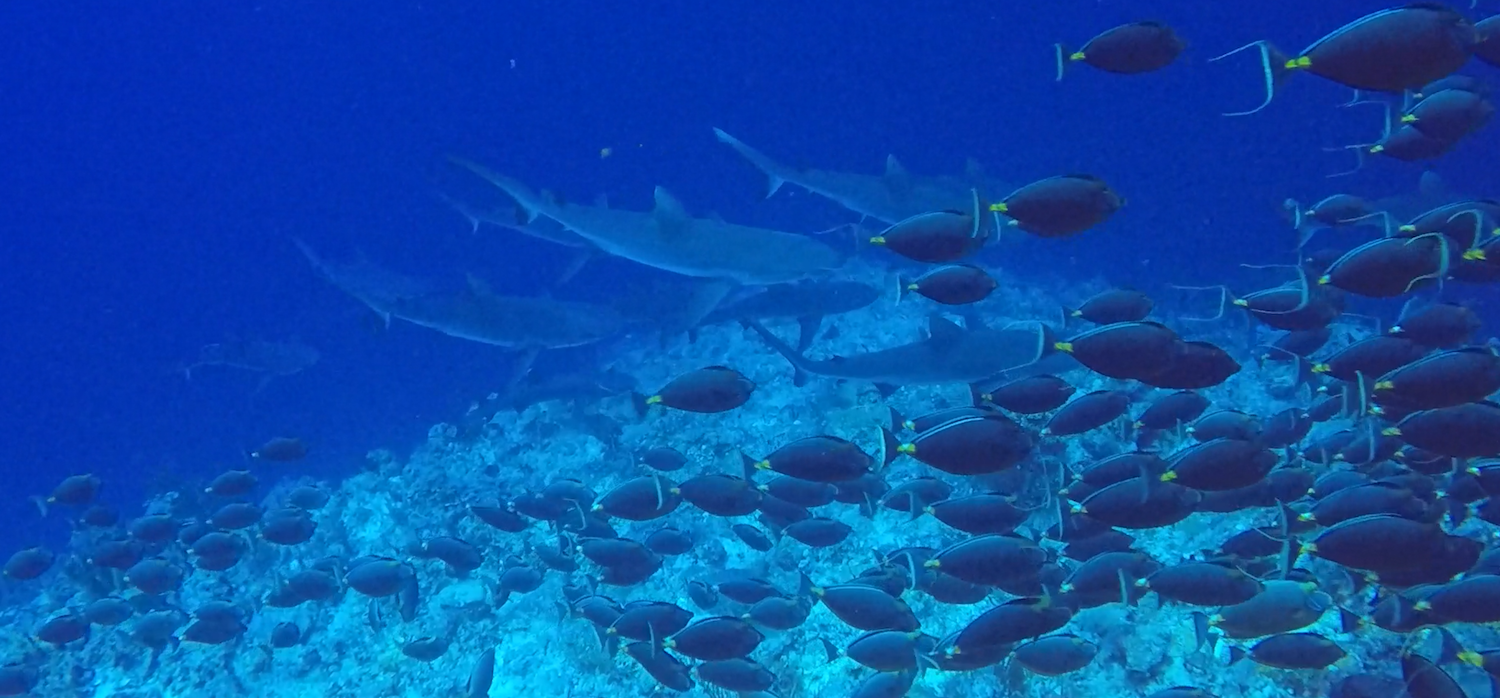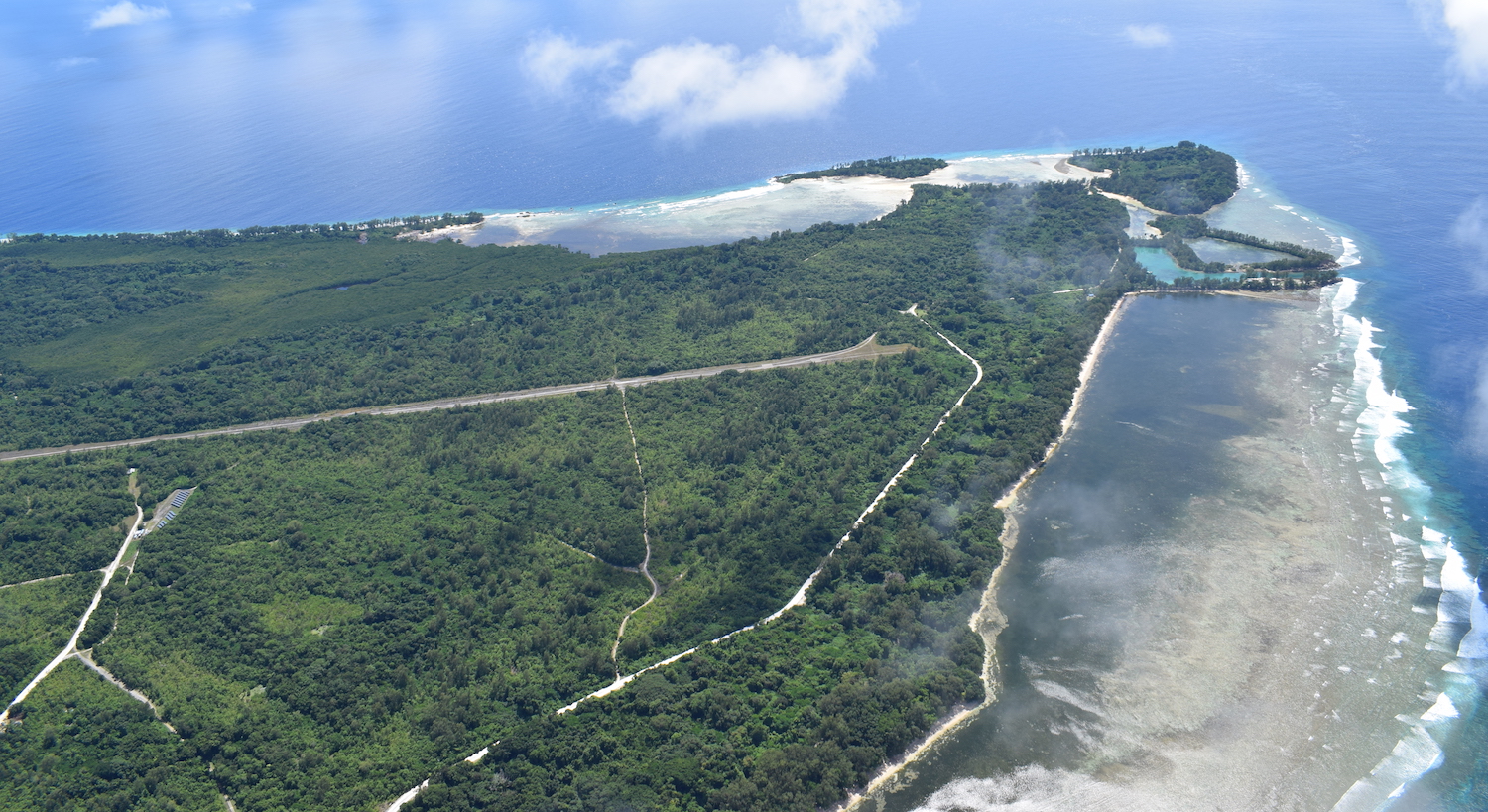It’s only fair to warn you that as well as world-class scuba diving Palau has far more than its fair share of natural wonders, especially the spectacular Rock Islands, and there’s a very good chance you will be overwhelmed by their mind-boggling splendour. What’s more, they’re all easily accessible off the south coast of this tiny Micronesian country, once you finally get all the way here.
The government appears to be doing all it can to preserve this paradise. It has cut the number of charter flights in half, slashing annual visitor numbers by a quarter in three years, focusing instead on independent travellers who bring money to the local economy rather than giving it to their domestic tour operators. We came in January, supposedly in the high season (December to March), but no more than a handful of foreigners got off our plane and our taxi driver complained that very few visitors seemed to be coming here these days.
A national marine sanctuary of 500,00 square kilometres was created in 2015 to outlaw industrial fishing and protect rare stocks. And on 1 January 2018 Palau became the first country to adopt environmental considerations into its immigration policies. Every visitor has to sign a new Palau Pledge, stamped into their passport, committing them to “preserve and protect your beautiful and unique island home” and promising “the only footprints I shall leave are those that will wash away”. This is done without much fanfare so let us hope it is more than just a PR stunt and an excuse to replace the old $50 departure tax with the $100 Palau Pristine Paradise Environmental Fee; soon this will simply be added to your air fare so you will barely even notice it. Alii.
The main entry is from Guam, which takes 1 hour and 45 minutes, and there are also planes from Hong Kong and Manila, but as virtually all flights are at night it doesn’t matter which side you sit, you’ll have to wait for that breathtaking aerial view of the Rock Islands.
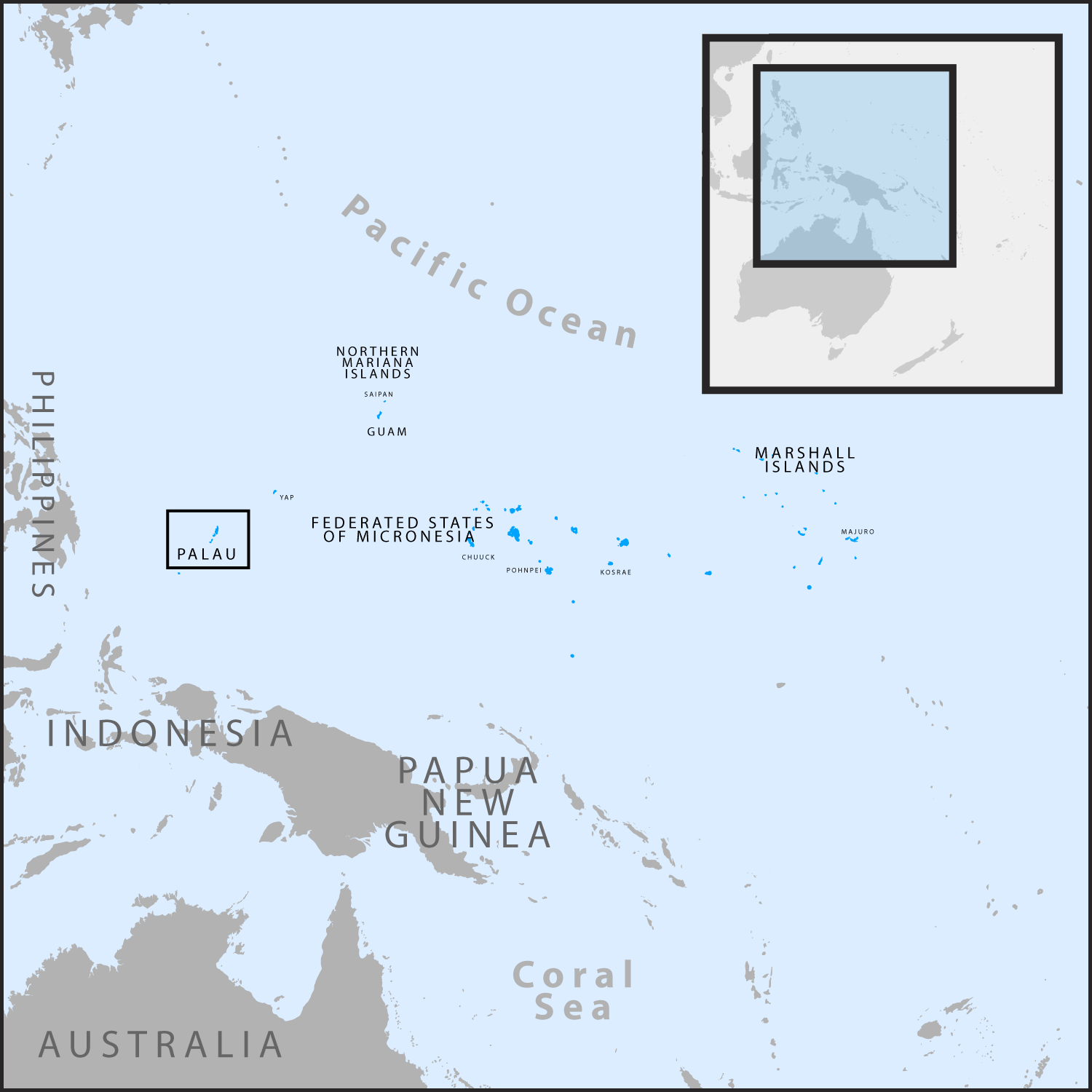
A taxi south from the airport across the bridge from Babeldaob island to the tourist centre of Koror island takes just fifteen minutes. Koror is the biggest town in Micronesia, outside Guam, but it is surprisingly not high end or especially charming and like the whole island seems to be segregated between places the Westerners go and places the Chinese go. It does have useful amenities, including good wifi at Coffee Berry (otherwise you have to buy a hotspot card with time credits), the decent Mingles So Thai restaurant and the excellent Taj Indian restaurant, a night market every other Friday, and probably more supermarkets and department stores than the rest of Micronesia put together.
We stayed right here in one of the first Airbnbs on the island, which offers decent quality at reasonable rates. Otherwise the hotels are hugely overpriced. The Palau Pacific Resort and the Palau Royal Resort are the two big ones, at the south of Koror island, with fake beaches and facilities non-residents can use for $95 a day at PPR and $40 at PRR. Other options include the Cove Hotel (Western) and Sea Passion Hotel (Chinese). There is also the Carp Island Resort on a private island.
There are half a dozen good restaurants further afield including the Drop Off Bar and Grill, Elilai and Kramers. Most of the better places will send a car to collect and deposit you.
Just south of Koror is Malakal island, where you will find Sam’s Tours. Among the seventy-odd diving centres in Palau, many serving only Chinese customers, Sam’s is an established institution, dating from 1990, and it alone has a link with the Unique Dive Expeditions team that can take you to some very special places. Sam’s is diving on an industrial scale, at least for Micronesia, professionally run with a big shop front, kit bay and bar area, smiling dive masters aplenty, all of which was at first a bit of a shock after the intimate personal service at Truk Lagoon.

There are showstopping boat rides for an hour or so south or west through the azure avenues between the magnificent Rock Islands to reach the dive sites; there are up to ten in a boat plus guide and driver, with a bento box lunch and lashings of iced fruit tea. Sam’s can also sort out kayaking around the Rock Islands. Another good option would be one of the liveaboards, as sleeping as well as diving among the Rock Islands off the south coast would be marvellous.
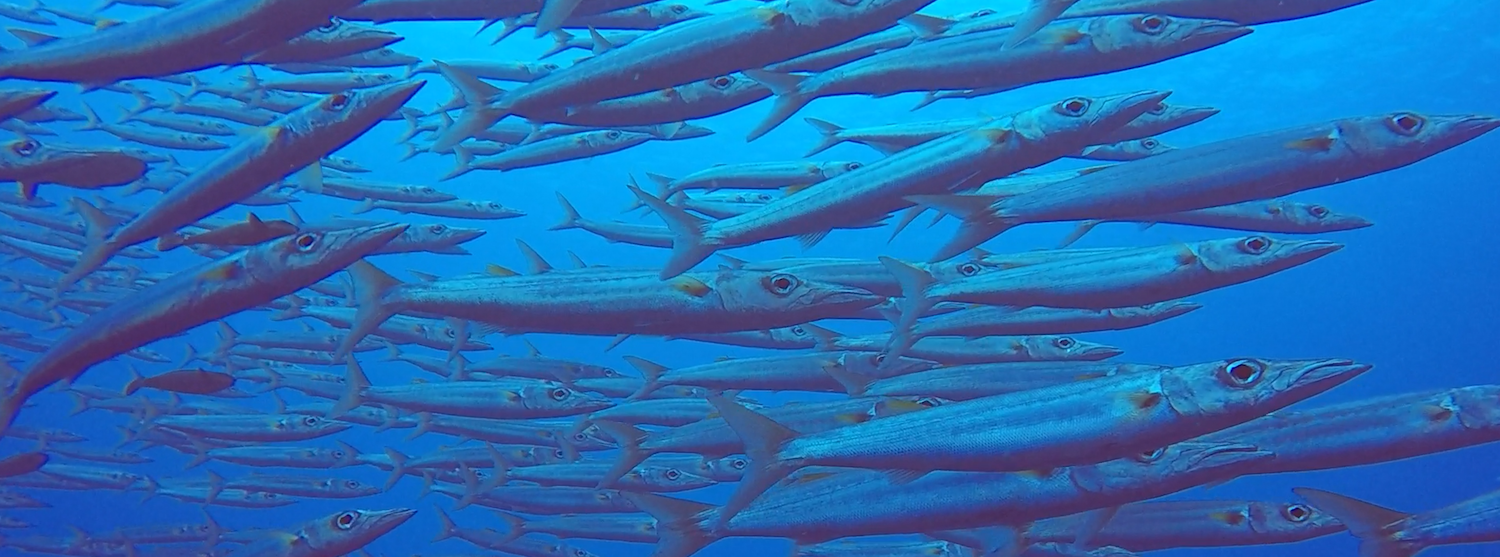
The best way to get your bearings is to take a scenic flight, with Palau Helicopters ($550 an hour) or a Pacific Mission Aviation light aircraft ($180 for 40 minutes), both of which can go with doors off for a closer encounter. This is an absolutely unmissable experience. We were exceptionally lucky in that we joined a flight that diverted to drop service deliveries and collect a local passenger from Angaur, the island farthest south; she spent the entire journey playing patience on her mobile while we hung out the side taking hundreds of photos of one of the best views in the world. As we approached Angaur at about 300m, the water was so clear that we were able to see a turtle swimming under the ocean below, and on the rough track of a runway monkeys are often scattered by the engine noise of the approaching plane as it comes in to land.
There are as many as 300 Rock Islands, or Chelbacheb, in a string 50km long in Palau’s Southern Lagoon. They are limestone and coral uprises smothered in vegetation that have been eroded by the sea so the intertidal zone forms mushroom shapes sprouting from the turquoise water.
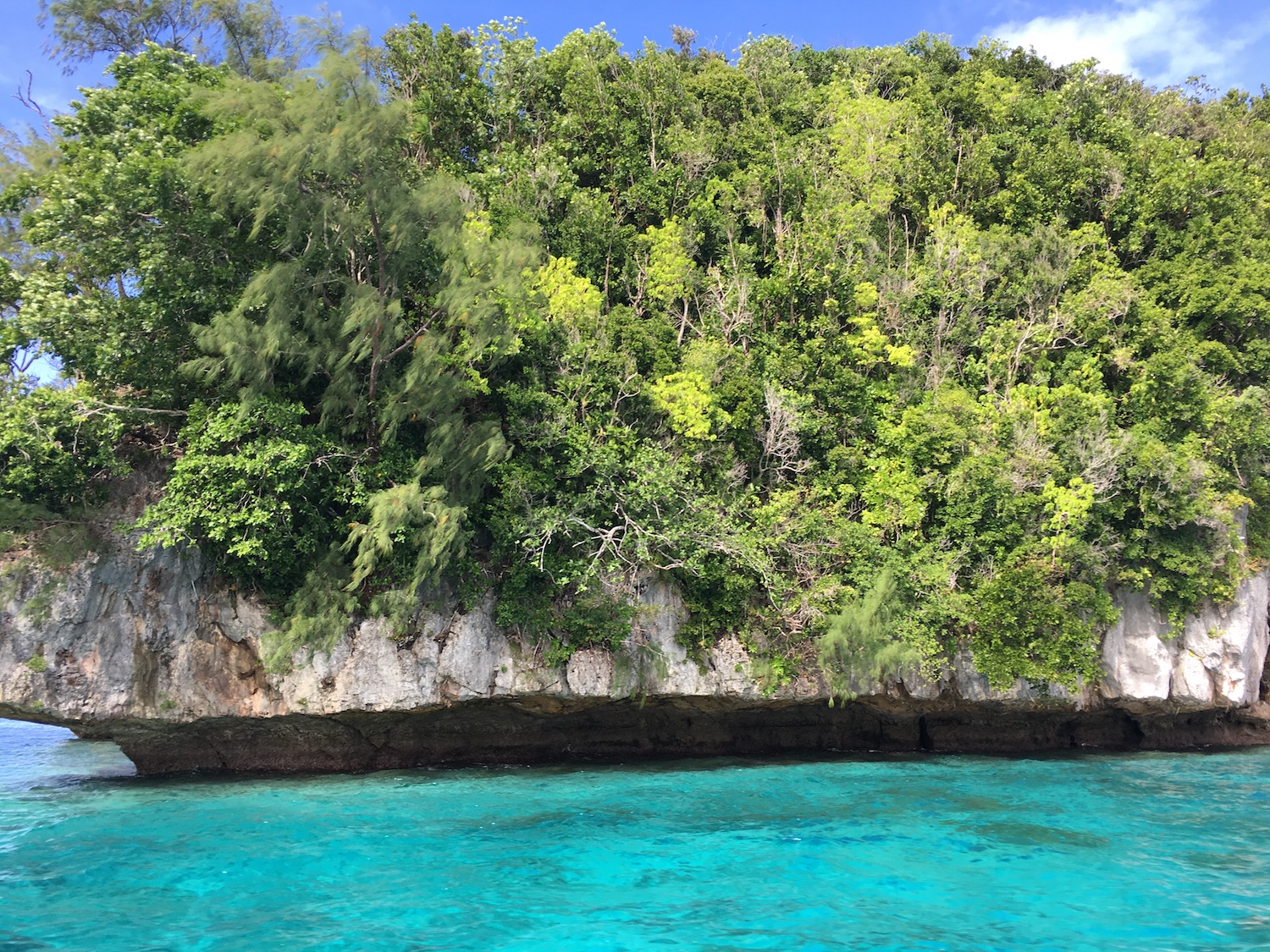
A UNESCO World Heritage Site, they are virtually uninhabited though you can get to the beaches for surface intervals and day trips. They are surrounded by a protective reef that at times makes the water is so calm, like glass right to the horizon, that the wisps of cloud are reflected in the Pacific Ocean.
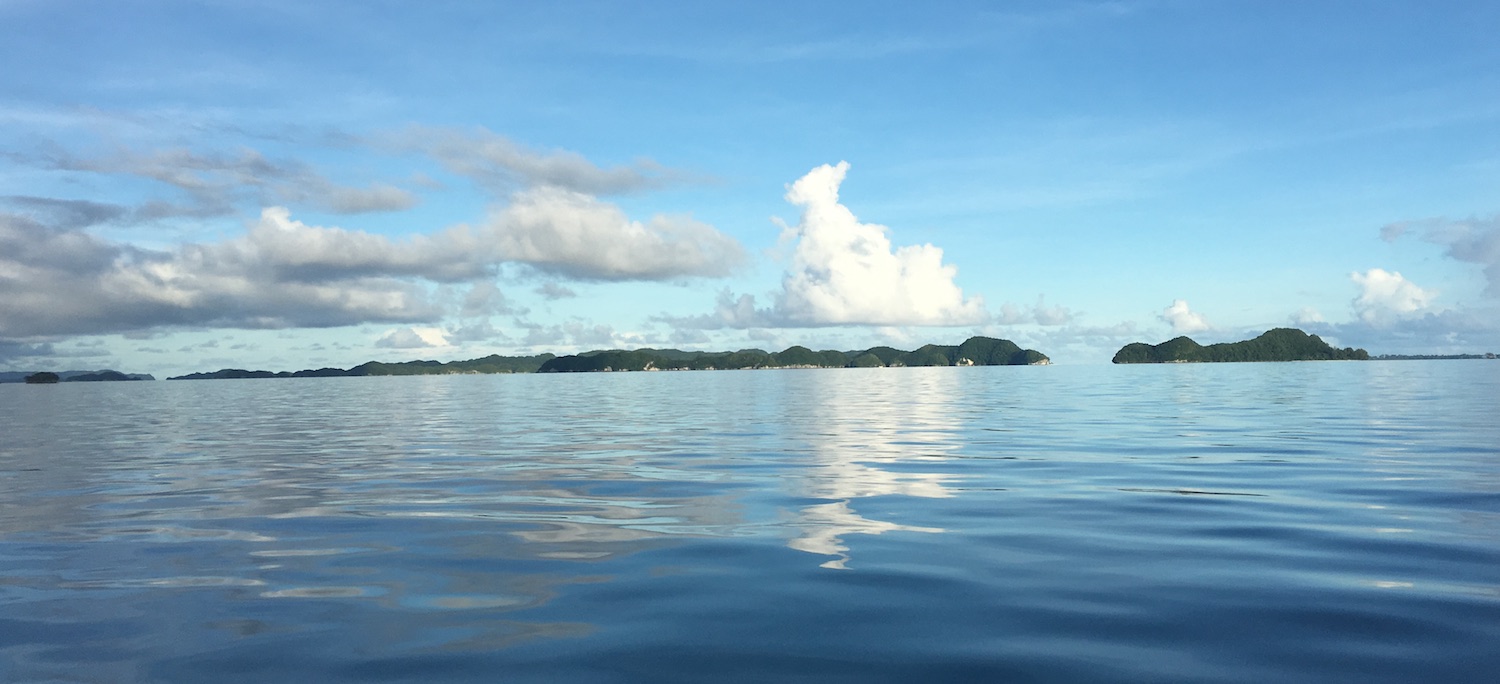
Amid the islands is the Milky Way, a natural mud bath, and Jellyfish Lake, where millions of golden jellyfish migrate horizontally every day. It is safe to dive here, though since a serious drought in 2016, which killed larger jellyfish, the lake has been closed to tourists so stocks can be replenished. These are just two of the seventy marine lakes here.
The most iconic view, which you will see in all the brochures, is of a small cluster known as the Seventy Islands.
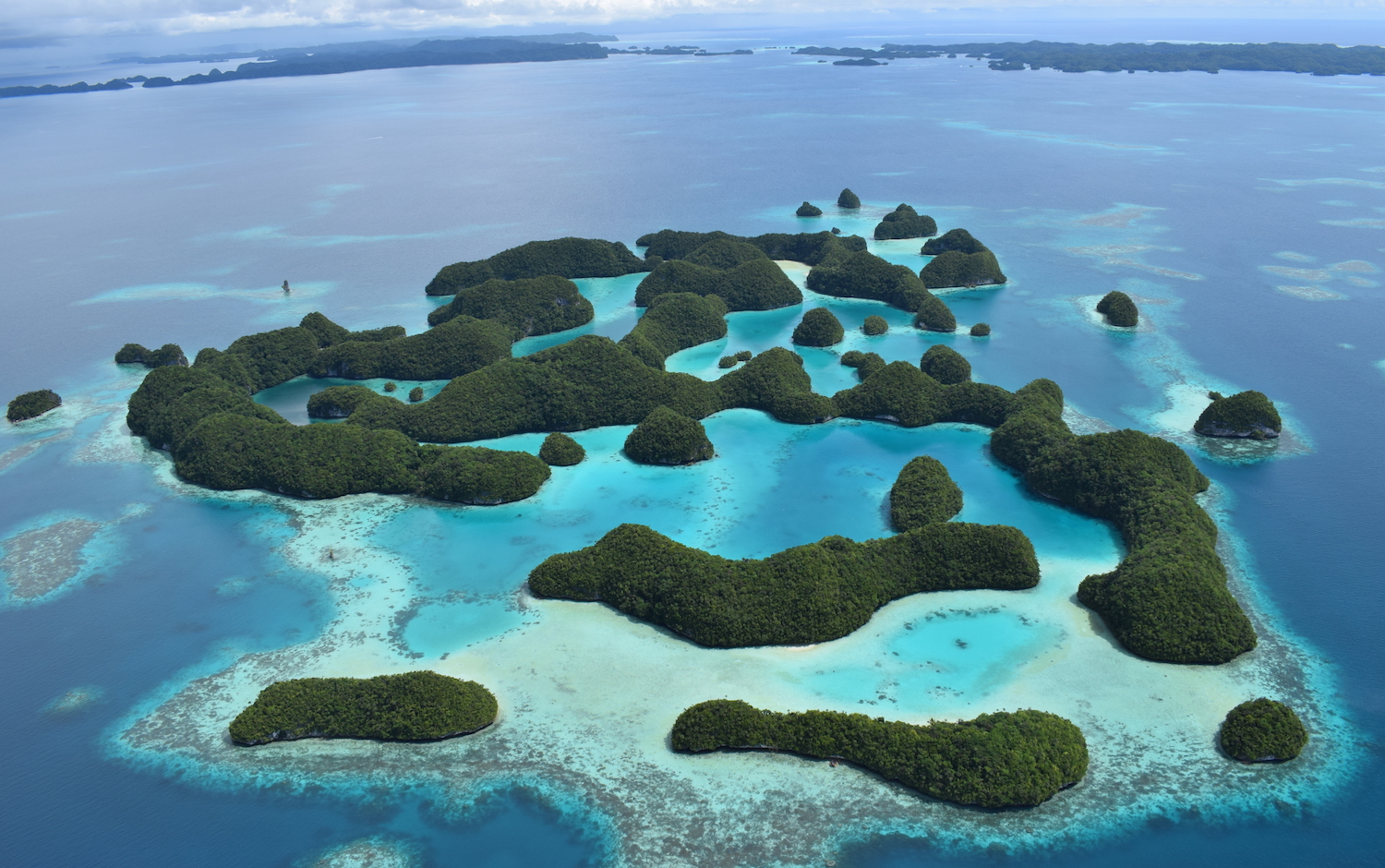
Another popular picture is of the Natural Arch.

Among all this there are several world class dive sites. One of them is the Ulong Channel on the western reef. Like many here, it is in the strong current that you see most of the action – you just clip on your reef hook and hang about watching the show – before drifting past lettuce corals and giant clams. There are so many fish they can appear to go off like fireworks.
Named after the colonialists who dynamited the reef to open a path for shipping during their occupation of Palau before the First World War, the German Channel is an awesome sight – from the sky and from the water.
There are reputed to be almost 400 manta rays in Palau and at the mouth of the German Channel is a cleaning station at 20m. In fact, the plankton is sufficiently thick near the surface that you can even see these magnificent beasts, with wingspans as much as 7m, listed as vulnerable by the International Union for Conservation of Nature, just from snorkelling.
The most famous site of all is the Blue Corner, rated by authoritative Scuba Travel the second best on the planet in 2018. You can buy T-shirts about this place in the airport. It is a huge drop off wall with a lot of the fun on the top at about 15m. You will see endless reef sharks, bumphead parrotfish, swirling shoals of barracuda, napoleon wrasse over a metre long as friendly as pets, even the occasional marlin. The Blue corner is so special because of its topography: the tides and extreme currents bring in vast amount of marine life. Because the current can change rapidly, even during a dive, each visit can be a totally difference experience. When conditions work perfectly you simply hook yourself on to the corner of the reef, relax and enjoy.
From the air, not only can you see very clearly the corner as it drops into the gorgeous sapphire at vast depths, but also its Blue Hole, a 30m chimney.
We were at the Blue Corner over the new moon, which is the procreating moment for many species. One particularly outstanding dive was watching for an hour as a team of twenty-five whitetip sharks hunted a shoal of several hundred beautiful orange-spine unicornfish, which were distracted by dancing in synch back and forth right in front of us as part of the spawning ritual they perform just three or four times a year. It is a privilege to be allowed into their universe.
On top of all that, if you come at the right time of the lunar cycle there are a couple of truly exceptional dives organised by Unique Dive Expeditions. On the full moon, you can see as many as 10,000 red snappers assemble to spawn, so energetically are they focussed that many end up eaten by the 4m bullsharks that circle around.
At the new moon, an estimated 800 bumphead parrotfish accumulate from a radius of up to 6km. As the sun rises, just after the tide turns to go out, with a maximum of seven divers on the one boat that has to be booked months in advance, we slipped into the sea. These are adolescents, before they mature and go off to live in family groups, that come to a rave that turns into an orgy. They swim at 20 metres for 20 minutes in rigid lines from the reef to the blue, then together they all rise, change colour, and in clusters of half a dozen or more they shoot up towards the surface for a few metres releasing eggs that are swept out to sea in relative safety; yet only 0.1%, 1 in 1,000, will become fish. They repeat this every few minutes for half an hour. These are normally very nervous fish but in their spawning stupor you can get to within a couple of metres. Does it get any better than that?
During the Second World War, Japan had an important garrison on Peleliu, a beautiful island with a dark history near the foot of the chain. It was the scene of an especially bloody battle in the autumn of 1944 when it was finally taken by US forces, and it has more or less been left as a moment to the conflict, making it a very good trip. There is an occasional ferry but we took a tiny boat for just the two of us for the 90 minutes snaking through the Rock Islands. We booked with 7th Wonder Dive & Tours, unusually for these parts a locally owned and run firm. There is only one village, in the north of the 3km x 9km verdant island, where the boats dock, which has a very chilled atmosphere. A little outside, off Orange Beach, Dolphin Bay Resort & Peleliu Divers has everything you need.
The main sites are on the south-west corner of Peleliu near the beaches where US forces landed from across the treacherous reef under heavy fire: the Japanese airstrip and airforce HQ (designed identically to others across the Pacific, notably in Tinian in the Northern Mariana Islands), several gun posts, including in spooky caves, lots of rusting American tanks and a Japanese zero bomber, as well as a small museum. Of particular importance is Bloody Nose Ridge, down the spine of the island, where 10,000 Japanese were trapped and suffered the first ever US use of napalm. There are signs advising you stay within the marked areas as even now not everywhere has been cleared of explosive remnants of war.
Babeldaob island, up north where the modern airport is to be found, is the second largest island in Micronesia after Guam, and offers enough for a day trip. Alamo, Enterprise and National all have offices at the airport and in Koror town. It takes only a couple of hours to drive all the way around the perimeter on what is known as the compact road, built recently by the US.
If you start at the bridge to Koror and head clockwise, you will come to the Ngardmau waterfall after 45 minutes. It advertises cable cars and zip wires but we saw no evidence they are in use, so you take a 30 minutes walk down a muddy path with a few crumbling steps and paddle by the river before reaching the nice view for a picture of the falls. Ten minutes farther along the road, turn left at the sign to Ngarchelong State and drive another fifteen minutes to the northernmost tip of the island; at the causeway going out, with the open sea on the left, there is a mangrove lake on the right full of crocodiles. At the end of the road you will come to the Badrulchau ancient stone monoliths, where there are picnic tables with good views over the sea. It is another half-hour straight south down the east coast to a small collection of huge government buildings, with the White House (a big dome, but yellow) flanked by the executive and the judiciary. For a country of 20,000 people, this is quite a building. It opened in 2006 and took as long as seven years to build, thanks to funding from China.
Metuker ra Bisech island, not far from the bridge to Koror, can be reached only by boat. This is where Stone Money was quarried before transportation 450km north-east to Yap in the Federated States of Micronesia.
Palau has so many world class attractions that if it was a boxer you would say that pound-for-pound this tiny country is among the best on the planet. It packs a big punch.
